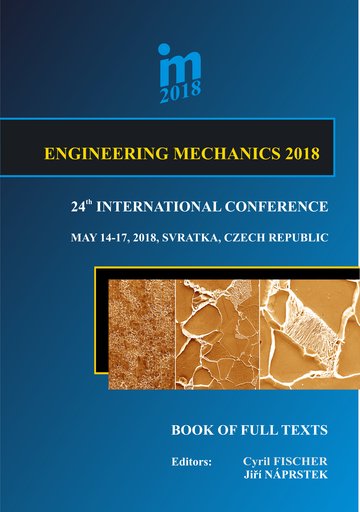Proceedings Vol. 24 (2018)

ENGINEERING MECHANICS 2018
May 14 – 17, 2018, Svratka, Czech Republic
Copyright © 2018 Institute of Theoretical and Applied Mechanics of the Cech Academy of Sciences, Prague
ISBN 978-80-86246-91-8 (electronic)
ISSN 1805-8248 (printed)
ISSN 1805-8256 (electronic)
list of papers scientific commitee
pages 737 - 740, full text
Designs of medical devices are tested for their mechanical behaviour, and ability to transfer the load that is normally bore by the healthy tissue. The virtual testing in silico is widely accepted technique and will be used in our work to simulate a walk. The already existing Finite Element (FE) model of the lumbar spine was reused while the virtual behaviour was controlled by a set of constrains and a load data, normally transferred through the load-bearing tissue. The magnitude and character of the used load depended on the physical activity, external loads, physical condition of the subject and its specific factors such as gender, health condition, etc. Most of the published simulations used estimated simplified loads that barely simulate the real behaviour. This paper will discuss performance of the lumbar segment during the walk. The musculo-skeletal system is a statically indeterminate system thus the forces were solved via computational modelling using the trajectories recorded by VICON system, and consequently exported into an open software for computation. All forces acting on the segment were exported to into Finite Element (FE) database and the obtained results presented the importance of correct material model as well as the corresponding load model.
back to list of papers
Text and facts may be copied and used freely, but credit should be given to these Proceedings.
All papers were reviewed by members of the scientific committee.

 Powered by
Imce 3.20 © 2023, Pavel Formánek, Institute of Thermomechanics AS CR, v.v.i. [generated: 0.0284s]
Powered by
Imce 3.20 © 2023, Pavel Formánek, Institute of Thermomechanics AS CR, v.v.i. [generated: 0.0284s]